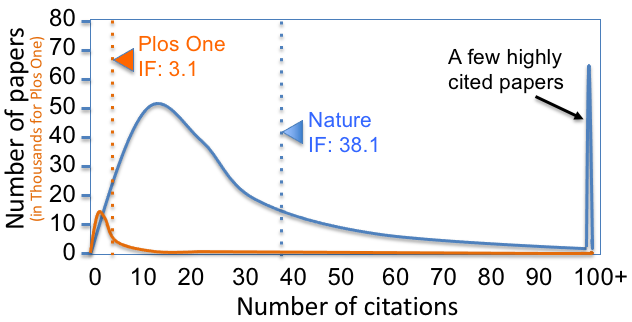|
Asian Journal Of Social Science
''Asian Journal of Social Science'' (''AJSS'') is a hybrid open access quarterly peer-reviewed academic journal published by Elsevier Science on behalf of the Department of Sociology and Anthropology, National University of Singapore, covering Asian studies, ranging from sociology, anthropology, cultural studies, economics, geography, history, political science, and psychology. In addition to research papers, it also publishes book reviews, research notes, and short essays. AJSS was published by BRILL Publishers before 2021. The editors-in-chief of this journal are Joonmo Son and Eric C. Thompson. This journal was established in 1968 and is abstracted and indexed by Social Sciences Citation Index and Scopus. According to the ''Journal Citation Reports'', the journal has a 2023 impact factor The impact factor (IF) or journal impact factor (JIF) of an academic journal is a scientometric index calculated by Clarivate that reflects the yearly mean number of citations of articl ... [...More Info...] [...Related Items...] OR: [Wikipedia] [Google] [Baidu] |
Asian Studies
Asian studies is the term used usually in North America and Australia for what in Europe is known as Oriental studies. The field is concerned with the Asian people, their cultures, languages, history and politics. Within the Asian sphere, Asian studies combines aspects of sociology, history, cultural anthropology and many other disciplines to study political, cultural and economic phenomena in Asian traditional and contemporary societies. Asian studies forms a field of post-graduate study in many universities. It is a branch of area studies, and many Western universities combine Asian and African studies in a single faculty or institute, like SOAS in London. It is often combined with Islamic studies in a similar way. The history of the discipline in the West is covered under Oriental studies. Branches * South Asian studies (Indology) ** Bengal studies ** Dravidian studies *** Tamilology ** Pakistan studies ** Sindhology * Southeast Asian studies ** Filipinology ... [...More Info...] [...Related Items...] OR: [Wikipedia] [Google] [Baidu] |
Social Sciences Citation Index
The Social Sciences Citation Index (SSCI) is a commercial citation index product of Clarivate Analytics. It was originally developed by the Institute for Scientific Information from the Science Citation Index. The Social Sciences Citation Index is a multidisciplinary index which indexes over 3,400 journals across 58 social science disciplines – 1985 to present, and it has 122 million cited references - 1900 to present. It also includes a range of 3,500 selected items from some of the world's finest scientific and technical journals. It has a range of useful search functions such as ‘cited reference searching’, searching by author, subject, or title. Whilst the Social Sciences Citation Index provides extensive support in bibliographic analytics and research, a number of academic scholars have expressed criticisms relating to ideological bias and its English-dominant publishing nature. Overview The SSCI citation database covers some 3,400 academic journals in the social sc ... [...More Info...] [...Related Items...] OR: [Wikipedia] [Google] [Baidu] |
Academic Journals Established In 1968
An academy ( Attic Greek: Ἀκαδήμεια; Koine Greek Ἀκαδημία) is an institution of secondary or tertiary higher learning (and generally also research or honorary membership). The name traces back to Plato's school of philosophy, founded approximately 385 BC at Akademia, a sanctuary of Athena, the goddess of wisdom and skill, north of Athens, Greece. Etymology The word comes from the ''Academy'' in ancient Greece, which derives from the Athenian hero, ''Akademos''. Outside the city walls of Athens, the gymnasium was made famous by Plato as a center of learning. The sacred space, dedicated to the goddess of wisdom, Athena, had formerly been an olive grove, hence the expression "the groves of Academe". In these gardens, the philosopher Plato conversed with followers. Plato developed his sessions into a method of teaching philosophy and in 387 BC, established what is known today as the Old Academy. By extension, ''academia'' has come to mean the accumulation, d ... [...More Info...] [...Related Items...] OR: [Wikipedia] [Google] [Baidu] |
English-language Journals
English is a West Germanic language of the Indo-European language family, with its earliest forms spoken by the inhabitants of early medieval England. It is named after the Angles, one of the ancient Germanic peoples that migrated to the island of Great Britain. Existing on a dialect continuum with Scots, and then closest related to the Low Saxon and Frisian languages, English is genealogically West Germanic. However, its vocabulary is also distinctively influenced by dialects of France (about 29% of Modern English words) and Latin (also about 29%), plus some grammar and a small amount of core vocabulary influenced by Old Norse (a North Germanic language). Speakers of English are called Anglophones. The earliest forms of English, collectively known as Old English, evolved from a group of West Germanic ( Ingvaeonic) dialects brought to Great Britain by Anglo-Saxon settlers in the 5th century and further mutated by Norse-speaking Viking settlers starting in ... [...More Info...] [...Related Items...] OR: [Wikipedia] [Google] [Baidu] |
Asian Studies Journals
{{disambiguation ...
Asian may refer to: * Items from or related to the continent of Asia: ** Asian people, people in or descending from Asia ** Asian culture, the culture of the people from Asia ** Asian cuisine, food based on the style of food of the people from Asia ** Asian (cat), a cat breed similar to the Burmese but in a range of different coat colors and patterns * Asii (also Asiani), a historic Central Asian ethnic group mentioned in Roman-era writings * Asian option, a type of option contract in finance * Asyan, a village in Iran See also * * * East Asia * South Asia * Southeast Asia * Asiatic (other) Asiatic refers to something related to Asia. Asiatic may also refer to: * Asiatic style, a term in ancient stylistic criticism associated with Greek writers of Asia Minor * In the context of Ancient Egypt, beyond the borders of Egypt and the co ... [...More Info...] [...Related Items...] OR: [Wikipedia] [Google] [Baidu] |
Thomson Reuters
Thomson Reuters Corporation ( ) is a Canadian multinational media conglomerate. The company was founded in Toronto, Ontario, Canada, where it is headquartered at the Bay Adelaide Centre. Thomson Reuters was created by the Thomson Corporation's purchase of the British company Reuters Group in April 2008. It is majority-owned by The Woodbridge Company, a holding company for the Thomson family. History Thomson Corporation The forerunner of the Thomson company was founded by Roy Thomson in 1934 in Ontario, as the publisher of '' The Timmins Daily Press''. In 1953, Thomson acquired the '' Scotsman'' newspaper and moved to Scotland the following year. He consolidated his media position in Scotland in 1957, when he won the franchise for Scottish Television. In 1959, he bought the Kemsley Group, a purchase that eventually gave him control of the '' Sunday Times''. He separately acquired the '' Times'' in 1967. He moved into the airline business in 1965, when he acquire ... [...More Info...] [...Related Items...] OR: [Wikipedia] [Google] [Baidu] |
Impact Factor
The impact factor (IF) or journal impact factor (JIF) of an academic journal is a scientometric index calculated by Clarivate that reflects the yearly mean number of citations of articles published in the last two years in a given journal, as indexed by Clarivate's Web of Science. As a journal-level metric, it is frequently used as a proxy for the relative importance of a journal within its field; journals with higher impact factor values are given the status of being more important, or carry more prestige in their respective fields, than those with lower values. While frequently used by universities and funding bodies to decide on promotion and research proposals, it has come under attack for distorting good scientific practices. History The impact factor was devised by Eugene Garfield, the founder of the Institute for Scientific Information (ISI) in Philadelphia. Impact factors began to be calculated yearly starting from 1975 for journals listed in the ''Journal Citatio ... [...More Info...] [...Related Items...] OR: [Wikipedia] [Google] [Baidu] |
Journal Citation Reports
''Journal Citation Reports'' (''JCR'') is an annual publicationby Clarivate Analytics (previously the intellectual property of Thomson Reuters). It has been integrated with the Web of Science and is accessed from the Web of Science-Core Collections. It provides information about academic journals in the natural sciences and social sciences Social science is one of the branches of science, devoted to the study of society, societies and the Social relation, relationships among individuals within those societies. The term was formerly used to refer to the field of sociology, the o ..., including impact factors. The ''JCR'' was originally published as a part of '' Science Citation Index''. Currently, the ''JCR'', as a distinct service, is based on citations compiled from the '' Science Citation Index Expanded'' and the '' Social Sciences Citation Index''.- - - Basic journal information The information given for each journal includes: * the basic bibliographic information ... [...More Info...] [...Related Items...] OR: [Wikipedia] [Google] [Baidu] |
CNKI
CNKI (China National Knowledge Infrastructure; ) is a private-owned publishing company in China since 2014. CNKI maintains high annual subscription fees due to its ''de facto'' monopoly status on journal search in China. Because its subscription fee raised sharply every year, many elite Chinese universities and research institutions, including the Chinese Academy of Sciences and Peking University, have stopped subscribing to CNKI. CNKI owns a system called "China Integrated Knowledge Resources System," including journals, doctoral dissertations, masters' theses, proceedings, newspapers, yearbooks, statistical yearbooks, e-books, patents and standards. In January 2013, CNKI became the second designated DOI agent in mainland China, after the Institute of Scientific and Technical Information of China under the Ministry of Science and Technology. In May 2022, the State Administration for Market Regulation of China launched an antitrust investigation into CNKI for anti-competitive ... [...More Info...] [...Related Items...] OR: [Wikipedia] [Google] [Baidu] |
Scopus
Scopus is Elsevier's abstract and citation database launched in 2004. Scopus covers nearly 36,377 titles (22,794 active titles and 13,583 inactive titles) from approximately 11,678 publishers, of which 34,346 are peer-reviewed journals in top-level subject fields: life sciences, social sciences, physical sciences and health sciences. It covers three types of sources: book series, journals, and trade journals. All journals covered in the Scopus database are reviewed for sufficiently high quality each year according to four types of numerical quality measure for each title; those are ''h''-Index, CiteScore, SJR ( SCImago Journal Rank) and SNIP (Source Normalized Impact per Paper). Searches in Scopus also incorporate searches of patent databases. Overview Comparing ease of use and coverage of Scopus and the Web of Science (WOS), a 2006 study concluded that "Scopus is easy to navigate, even for the novice user. ... The ability to search both forward and backward from a particu ... [...More Info...] [...Related Items...] OR: [Wikipedia] [Google] [Baidu] |
SCImago Journal Rank
The SCImago Journal Rank (SJR) indicator is a measure of the prestige of scholarly journals that accounts for both the number of citations received by a journal and the prestige of the journals where the citations come from. Rationale Citations are an indicator of popularity of scientific works and can be perceived as endorsement; prestige can be understood as a combination of the number of endorsements and the prestige of the works publishing them. Adopting this view, the ''SJR indicator'' assigns different values to citations depending on the perceived prestige of the journals where they come from. However, studies of methodological quality and reliability have found that "reliability of published research works in several fields may be decreasing with increasing journal rank", contrary to widespread expectations. The calculation of the ''SJR indicator'' is similar to the '' Eigenfactor score'', with the former being based on the Scopus database and the latter on the We ... [...More Info...] [...Related Items...] OR: [Wikipedia] [Google] [Baidu] |


